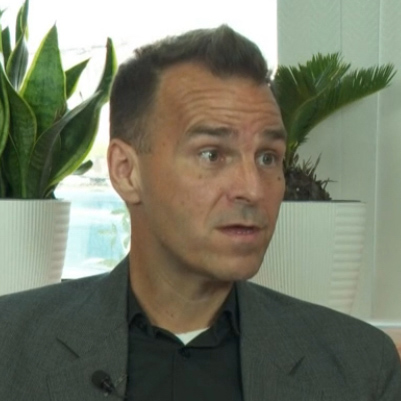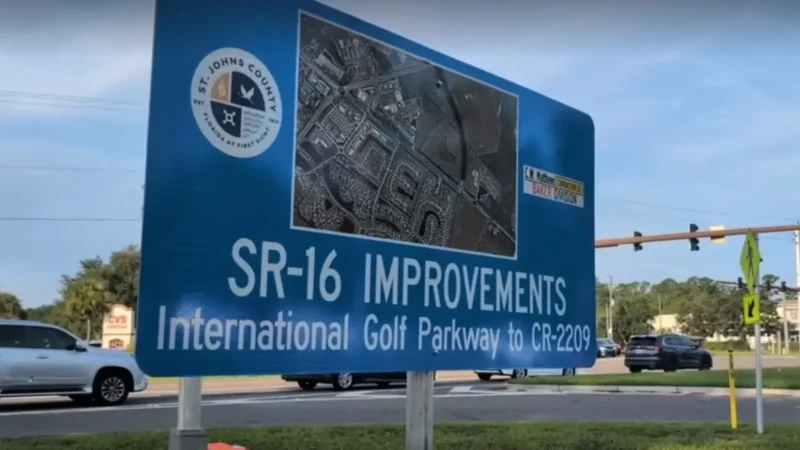
Elected officials continue to carp about the Jacksonville Transportation Authority.
The latest transit grievance has to do with NAVI – the “Ultimate Urban Circulator” that appears to be the ultimate waste of money, a bookend to the dilapidated Skyway in its failure to meet the transportation needs of the region.
Daily ridership struggles to hit triple digits — suggesting that for the short distance traversed, JTA employees would be better off pulling people around with rickshaws than having these buses drive people on loop.
JTA CEO Nat Ford seems to think that when the Four Seasons finally goes in, those expense-account warriors and trust fund babies will want to take the automated bus.
In the meantime, conservatives and liberals all have their beefs with the program that, per the Jacksonville Daily Record, has had 6,500 passengers in four months.
City Council member Rory Diamond, a mass transit skeptic, says “pull the plug.”
Member Jimmy Peluso, meanwhile, says the money would have been better spent on light rail.
NAVI is intended to eventually be part of a system that expands service to neighborhoods adjacent to Downtown, which is fine – even though many of them are on bus routes already.
In the short term, the project, which could cost $400 million by the time it’s done, feels like a boondoggle for budget hawks and like a slap in the face to people who want efficient and effective mass transit that we will never have here.
If you’ve ever lived in a major city, such as Boston, D.C., or New York, you’re likely aware that trains get you where you need to go. They are reliable and they cut down on traffic and impact on roads.
In Jacksonville, a place where light rail could have been instituted as part of consolidation and expanded as the metropolitan area grew as part of the infrastructure, good luck to you if you rely on JTA to get you where you’re going.
The bus might be late. It might be early. It might not stop.
A big reason employers often want their hires to have cars is because mass transit here simply isn’t reliable.
Decades ago, the city had a streetcar system. It was phased out, per Metro Jacksonville, by 1936 to be replaced by buses. As The Jaxson notes, the ultimate beneficiary was the automobile industry.
There was a time when one could get a cheap old beater car and very minimal insurance, of course. Those times are over. The Obama-era “Cash for Clunkers” scheme during the Global Financial Crisis took a lot of them off the roads. Then COVID-19 drove further escalations in the market.
A sad day for me was back in 2022, when my old car was rear-ended in front of my house, crashed into by a seemingly impaired driver.
I got the monetary value of the car eventually, after escalating the beef with the other driver’s insurance company to state agencies, which put the fear of God into the same phone jockeys who were so breezy with me until officially put on notice.
But I wasn’t able to be made whole because there was no commercially available equivalent to what I had.
For the last few years, I’ve used buses and Ubers in an effort to avoid privatized risk from a socialized problem of negligent, heedless drivers.
If I have time to kill, sure, I can rely on JTA to get me Downtown.
But if I’m cutting it close at all? It’s rideshare.
The failure of mass transit in this city is, at its heart, a failure of planning.
The southern part of the county really was built up post-consolidation. Done right, planners could have had developers pay part of the cost for train lines to be added as the very predictable expansion moved forward.
But in the words of Hillary Clinton, how do you get tough with your banker?
These land barons wouldn’t bankroll good ol’ boy mediocrities’ campaigns only to have to fight with them about terms of business deals.
So here we are now.
We have a mass transit system that very few of the masses use.
We have a complicated automated loop-ride that isn’t even automated for the next few months, due to what Action News Jax calls a software issue.
We have an inefficient bus system that seems designed to force people to buy cars and trucks.
And given the realities of capital and how it is deployed and programmed, by the time anything better emerges, many of those reading this will be in the ground or housebound.
Meanwhile, we can expect more lanes to be added to the highways, more patches for the peanut-brittle side streets, and more disappointment for anyone expecting Jacksonville to be able to perform the basic function of having mass transit that remotely compares with cities it would like to consider its peers.







